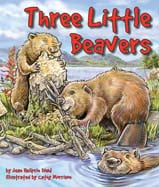Alignment to Standards for TX

| Grade | Number | Standard |
|---|---|---|
| 1 | 112.12 (b) (10) | organisms resemble their parents and have structures and processes that help them survive within their environments. |
| 1 | 112.12 (b) (10) (A) | external characteristics of an animal are related to where it lives, how it moves, and what it eats |
| 1 | 112.12 (b) (10) (C) | compare ways that young animals resemble their parents |
| 1 | 112.12 (b) (9) | the living environment is composed of relationships between organisms and the life cycles that occur. |
| 1 | 112.12 (b) (9) (C) | interdependence among living organisms such as energy transfer through food chains and animals using plants for shelter. |
| 1 | 113.3. (1.6) (A) | physical characteristics of places such as landforms, bodies of water, natural resources, and weather; |
| 2 | 112.13. (b) (10) (A) | compare how the physical characteristics and behaviors of animals help them meet their basic needs such as fins help fish move and balance in the water |
| 2 | 112.13. (b) (9) (C) | ways living organisms depend on each other and on their environments such as food chains |
| 2 | 113.4. (2.6) | locations and characteristics of places and regions. |
| 2 | 113.4. (2.8) (B) | identify ways in which people have modified the physical environment such as building roads, clearing land for urban development, and mining coal; |
| 3 | 112.14. (b) (10) | organisms undergo similar life processes and have structures that help them survive within their environments. |
| 3 | 112.14. (b) (10) (A) | explore how structures and functions of plants and animals allow them to survive in a particular environment |
| 3 | 112.14. (b) (10) (B) | some characteristics of organisms are inherited such as the number of limbs on an animal or flower color and recognize that some behaviors are learned in response to living in a certain environment such as animals using tools to get food |
| 3 | 112.14. (b) (9) | organisms have characteristics that help them survive and can describe patterns, cycles, systems, and relationships within the environments. |
| 3 | 112.14. (b) (9) (A) | physical characteristics of environments and how they support populations and communities within an ecosystem |
| 3 | 112.14. (b) (9) (C) | describe environmental changes such as floods and droughts where some organisms thrive and others perish or move to new locations. |
| 4 | 112.15. (b) (10) | organisms undergo similar life processes and have structures that help them survive within their environment. |
| 4 | 112.15. (b) (10) (A) | explore how adaptations enable organisms to survive in their environment such as comparing birds beaks and leaves on plants |
| 4 | 112.15. (b) (9) | living organisms within an ecosystem interact with one another and with their environment. |
| 5 | 112.16. (b) (10) | organisms undergo similar life processes and have structures that help them survive within their environments. |
| 5 | 112.16. (b) (10) (A) | compare the structures and functions of different species that help them live and survive such as hooves on prairie animals or webbed feet in aquatic animals |
| 5 | 112.16. (b) (10) (B) | differentiate between inherited traits of plants and animals such as spines on a cactus or shape of a beak and learned behaviors such as an animal learning tricks or a child riding a bicycle |
| 5 | 112.16. (b) (9) (C) | predict the effects of changes in ecosystems caused by living organisms, including humans, such as the overpopulation of grazers or the building of highways |
| K | 111.12 (K.11) | uses time to describe, compare, and order events and situations. |
| K | 111.12 (K.11) (B) | is expected to sequence events (up to three). |
| K | 112.11 (b) (10) | organisms resemble their parents and have structures and processes that help them survive within their environments. |